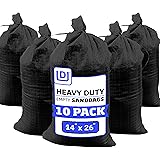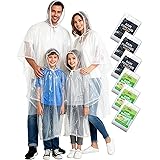Hey there, fellow survival enthusiasts! If you’re anything like me, you’ve probably daydreamed about what you’d do if the worst-case scenario ever hit. One method that’s become a game-changer for me is survival caching. It’s like having a secret stash that’s ready for action when you need it most. So let’s dive deep into this topic, shall we?
Understanding Survival Caching
What is Survival Caching?
Survival caching takes into account that sometimes things go south, and planning ahead can save your life. At its core, it’s about hiding essentials in strategic locations that you can access later. Imagine having food, tools, or emergency supplies tucked away, waiting for you to find them when you need it most.
Not only does caching give you peace of mind, but it also allows for a level of self-sufficiency. You won’t have to panic if there’s a crisis. Plus, it can be particularly useful for outdoors enthusiasts and those living in areas prone to natural disasters.
Ultimately, understanding what survival caching is will help you appreciate its importance in your prepping arsenal. The idea is simple: stash away necessities to prepare for the unknown.
The Benefits of Caching
Now that we know what it is, let’s talk about why it’s so beneficial. For starters, it creates a safety net. Having provisions set aside can mean the difference between thriving and just surviving during a crisis.
Additionally, caching helps you to distribute your resources. Instead of needing to carry everything on your back, you can spread out supplies across different locations. This not only makes it easier to access but also mitigates the risk of losing everything in a single incident.
Lastly, it allows for a level of psychological preparedness. Knowing that you have reserves waiting for you can reduce anxiety in uncertain times, letting you focus on other survival tactics.
Common Myths
It’s essential to clear the air on some common myths surrounding survival caching. One misconception is that you need to cache huge amounts to make it worthwhile. Not true! Even small, efficient caches can make a significant difference.
== > What if ... Get a FREE Subscription to PREPARE
Another myth is that caching is only for hardcore survivalists. In reality, it’s for anyone—even if you just want to be prepared for unexpected situations at home.
Lastly, some folks think that once you cache supplies, you can forget about them. Nope! Regular checks and updates are necessary to ensure your stashes remain usable.
Choosing the Right Cache Locations
Assessing Your Environment
The first step in successful caching is understanding your environment. This means assessing both the natural landscape and the potential threats you may face. Determine areas that are not only discreet but also safe from human interference and the elements.
I often look for spots near natural landmarks—a cluster of trees, a rocky outcrop, or even old building ruins. They offer great opportunities for concealment. Just make sure you choose locations that are memorable for you. After all, you don’t want to forget where you stashed that emergency food stash!
Besides natural landmarks, consider urban locations in your neighborhood. Places such as under staircases, in hollowed-out tree stumps in parks, or even hidden inside old furniture at a storage unit can work wonders for urban caching.
Testing Accessibility
Once you’ve picked spots, put your location choices to the test. Can you easily reach them? Imagine navigating the woods in the middle of the night or rushing through an urban area. Your cache should be accessible even during high-stress situations.
I’ve learned the hard way that a hidden cache that isn’t easy to access can turn out to be a wasted effort. Do a trial run. Walk to your predetermined locations at different times of day and conditions if possible, taking note of the journey’s ease or difficulty.
Also, think about weather conditions. If it rains, will the spot be muddy, or will you have trouble getting back to it? Evaluate these factors to ensure your spots are not only secure but also viable.
Concealment Strategies
Concealment is crucial! The idea is to hide your stash so well that even if someone is looking, they won’t find it. Start by camouflaging items with natural materials found nearby—leaves, branches, and dirt work wonders.
One cool trick I’ve picked up is using decoy caches. For example, hiding a fake musty bag nearby can throw off anyone who might be snooping around. Just remember, the more creative your camouflage, the better!
Lastly, always make sure any cache doesn’t disturb the wildlife or local ecosystem. It’s important to respect nature while preparing for emergencies.
Packing Your Cache
Choosing the Right Supplies
This is where it gets fun—what to pack! Your choices largely depend on the environment and what you anticipate needing most. Personally, I always start with the basics: food, water filtration tools, medical supplies, and a multi-tool.
Food is a biggie; I recommend lightweight, non-perishable items like freeze-dried meals or energy bars. These can last for ages and don’t take up much space. And hey, don’t forget food that you actually like—it’s going to feel like a treat when you finally dig in!
Since emergencies are unpredictable, I also suggest packing a few tools. Something versatile, like a multi-tool, can be essential for various tasks. Think about what would make you feel more secure and self-sufficient during tough times.
Get Preparedness and Self-Reliance Tips. Subscribe Now!
Durability Matters
Another thing to consider is packaging. All your goodies need to stand up against the elements, so using durable and waterproof containers is a must. I’ve had my share of soggy supplies because I didn’t take this seriously—trust me, you don’t want to go through that!
Label your goods clearly; it’s helpful in a pinch. Consider color-coding items based on category for even quicker access. The more streamlined you make this process, the more efficient you’ll be when it’s crunch time.
And, of course, think about the weight. You don’t want to pack so much that you struggle to carry it away if needed. Only pack what’s necessary, and consider leaving anything that doesn’t serve a clear purpose.
Mental Preparation
Beyond just materials, you need to get your mind right for caching. Visualizing yourself in a crisis situation where you have to rely on your cached supplies can really help prepare you mentally.
When packing your cache, imagine how you’d feel if you had to access it. Would you be calm and collected, or would panic set in? Practicing retrieval scenarios can help ensure you’re mentally prepared when the time comes.
Finally, the more you familiarize yourself with what’s in your cache, the more confident you’ll feel relying on it when you need it the most. This knowledge can significantly bolster your preparedness mindset, making survival caching all the more effective.
Maintaining Your Cache
Regular Checks
Okay, so you’ve got your cache packed and hidden—now what? Well, it’s essential to regularly check on your supplies. I recommend doing this at least once or twice a year.
Why? Because things can go bad over time. Food can expire, supplies can degrade, and you might even find that your chosen location has changed due to weather or human interference. Keeping tabs on your stashes will ensure they’re always ready when you need them.
Plus, checking in often gives you a chance to rotate supplies. You can swap out older items for newer ones while keeping everything fresh and in working order. It’s all about being proactive!
Updating Your Supplies
As you gain experience and learn more about survival needs, you might find that your initial cache isn’t sufficient anymore. You’ve got to be flexible and adaptable with your supplies to meet changing circumstances.
Take inventory and assess what’s working or not. Maybe you’ve grown to appreciate a different kind of food, or there are new tools you realize would be more beneficial. Now’s the time to make those updates.
And hey, tinker with the plan. This isn’t set in stone. As your skills and preferences evolve, so should your caching strategy.
Documenting Your Caches
Lastly, make sure you document all your caches! In the mad dash of a crisis, you may forget where you buried that stash—or worse, forget what’s in it. So, keep a little journal logging what you’ve cached and where.
Including GPS coordinates can be handy, especially if you’re stashing supplies in remote areas. Just don’t keep that journal in a spot where it could get lost along with your supplies—remember, the point is to keep it accessible yet secure!
By documenting everything, you’ll build confidence and ensure that when the going gets tough, you’re prepared to get going!
Conclusion
Survival caching is an art form, and like any good art, it takes practice and a little finesse. With the right mindset, well-chosen locations, and regular maintenance, you can build a robust system that provides peace of mind. I can’t stress enough how important it is to be proactive about your prepping. You never know when you’ll need to rely on what you’ve tucked away!
Keep your caches fresh, your strategies updated, and your minds sharp. Being prepared is more than just physical supplies; it’s a mental game too. Happy caching, my friends!
FAQ
1. What should I store in my survival cache?
Store non-perishable foods, water filtration devices, first aid supplies, tools, and anything else that might aid your survival during an emergency.
2. How do I choose a good location for my cache?
Look for discreet spots that are memorable, safe from human interference and the elements, and easily accessible in high-stress situations.
3. How often should I check my caches?
I recommend checking your caches at least once or twice a year to ensure supplies are fresh and everything is in working order.
4. Can I cache in urban areas?
Absolutely! Urban caching is a great idea. Just think creatively about potential hiding spots, such as parks or even in storage units.
5. What if I forget where I cached my supplies?
That’s why documentation is key! Keep a record of what and where you’ve cached, including GPS coordinates, but make sure to keep that info somewhere secure yet accessible.






